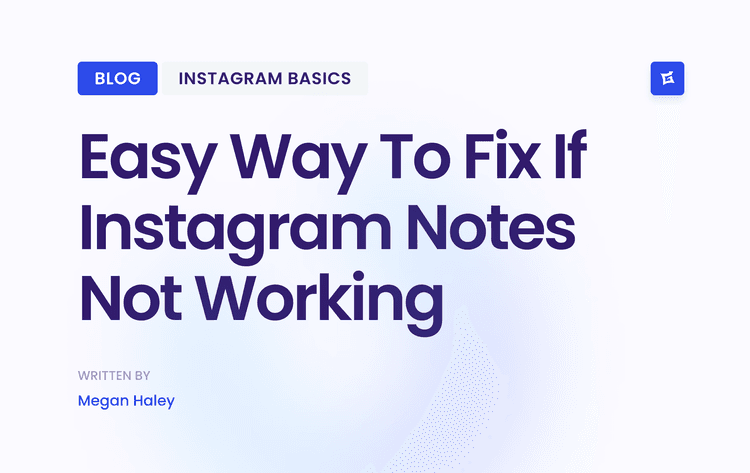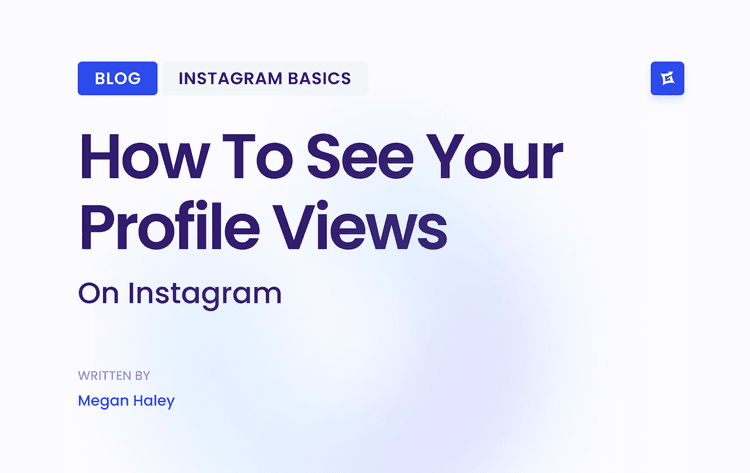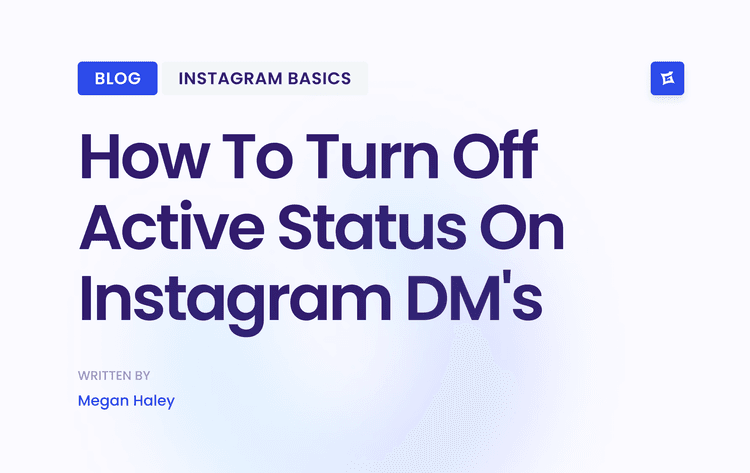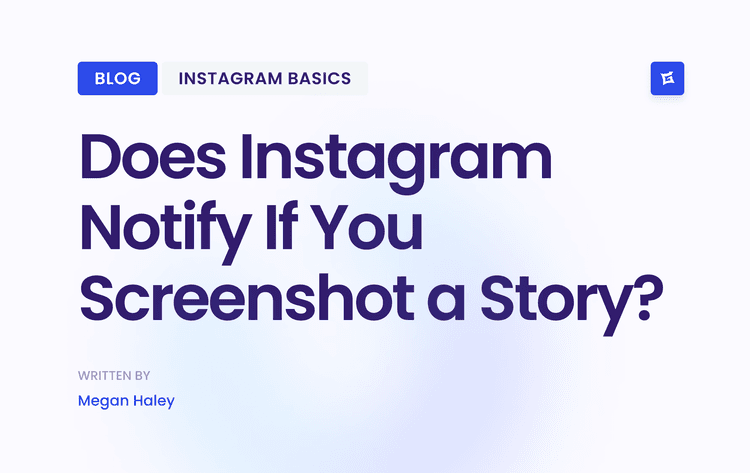Why Audience Analysis Is Your Secret Weapon
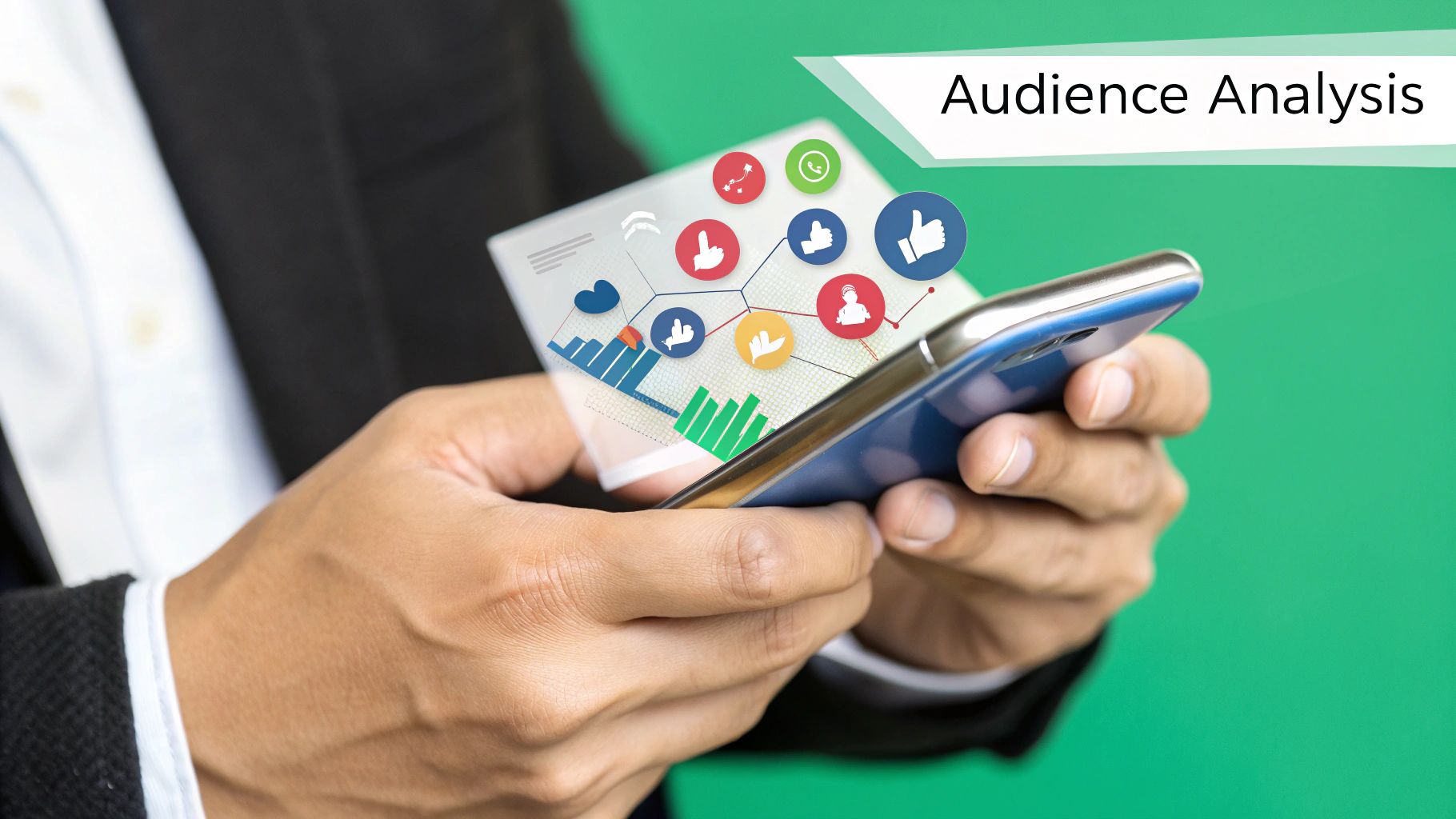
Let's be honest, posting into the void is a frustrating and inefficient way to spend your time. Real social media success isn't built on guesswork. It starts with a deep, almost obsessive, understanding of who you're talking to. This practice is what shifts your strategy from chasing vanity metrics (like follower counts) to driving actual business outcomes.
The brands you admire use audience analysis as the foundation for everything they do. It informs the content they create, the tone of voice they use, and sometimes even the new products they launch. When you truly know your audience, every decision becomes sharper and more intentional.
From Data Points to Human Connection
This whole process is about much more than staring at numbers on a dashboard. It's about building detailed, living personas that represent your ideal followers. For instance, a fitness apparel brand might assume its audience is just "people who like working out." But a good analysis will almost always reveal something more nuanced.
They might find two completely different groups:
The Competitive Athlete: Aged 22-30, this person geeks out on performance data, advanced training tips, and content about smashing personal records. They want to know how your gear will give them an edge.
The Wellness Enthusiast: Aged 30-45, this person is more interested in mental clarity, comfortable activewear, and content about finding a balanced lifestyle. They care about how your brand fits into their holistic well-being.
With that insight, the brand can stop making generic content and start speaking directly to each group's unique motivations. Suddenly, their marketing is twice as effective because it's targeted. This doesn't just guide what you post, but also when and where you post it for the biggest impact.
> The goal isn't just to be seen; it's to be understood and valued. Effective social media audience analysis ensures your message doesn't just reach people, but actually resonates with the right people.
The Foundation of Measurable Growth
At the end of the day, a deep understanding of your audience is directly tied to your return on investment. When you focus your efforts on the people most likely to become customers, you stop wasting time and money on campaigns that fall flat.
This analysis provides the critical context you need to interpret your metrics and build a loyal community that drives long-term growth. To dig deeper into connecting your work to tangible results, check out our guide on how to https://www.gainsty.com/blog/how-to-measure-social-media-success.
Setting Goals That Actually Drive Results
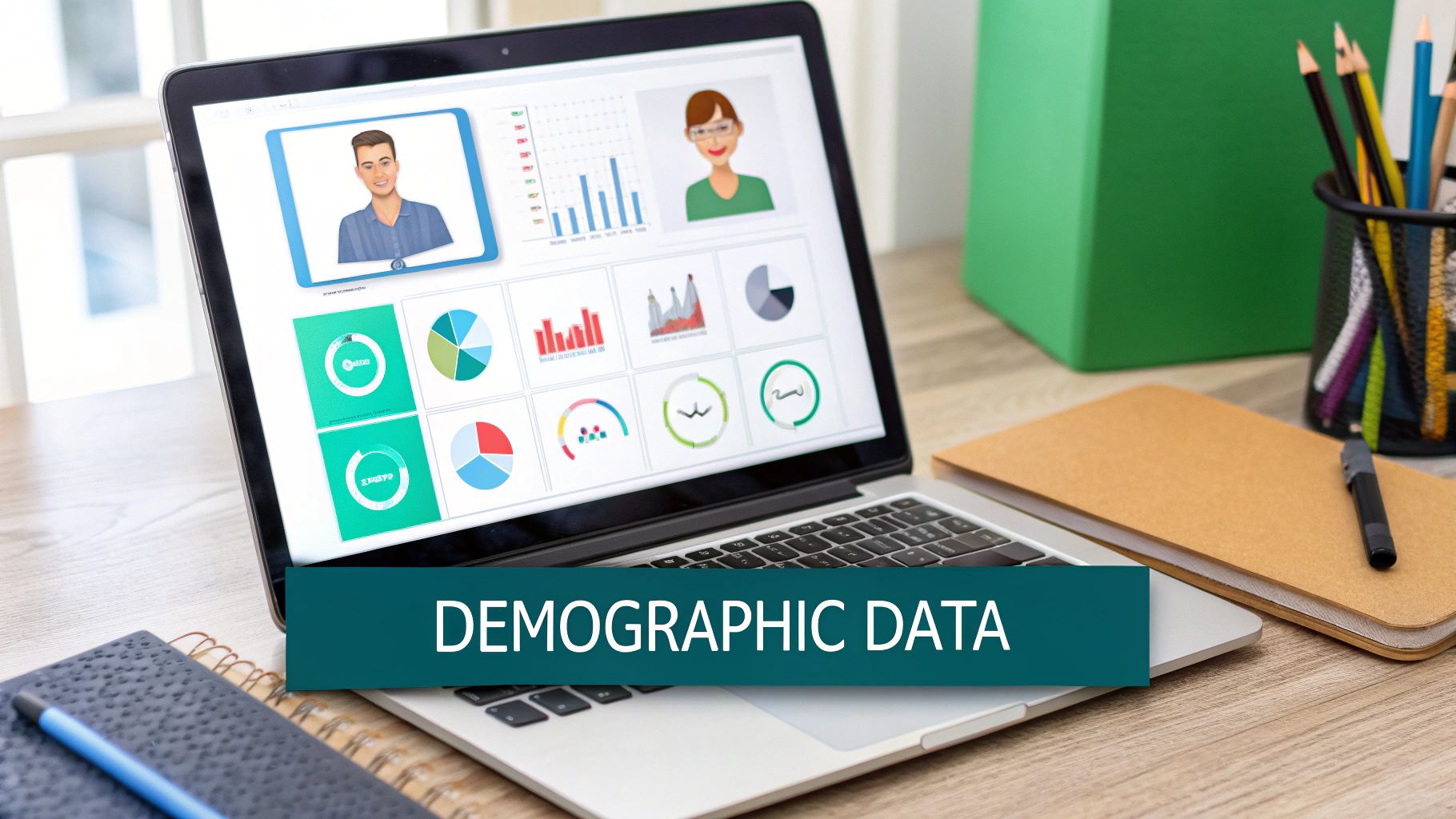
Before you even think about looking at a single analytic, you need to know where you're going. A social media audience analysis without a clear destination is just data tourism—you'll see plenty of interesting things, but you won't have a clue what to do with them.
Goals like "get more followers" or "increase engagement" are the social media equivalent of a blurry, hand-drawn map. They feel productive, but they lack the sharp focus needed to make a real impact on your business.
The best in the business define success with surgical precision. They don't just track vanity metrics; they connect every social media action directly back to broader business outcomes. Your goals are the "why" behind your analysis, giving every single data point a job to do.
From Vague Wishes to Specific Targets
Let's get practical. The real power comes from turning those fuzzy, ineffective goals into something you can actually measure and act on. This is the shift that turns a simple report into a strategic weapon.
Instead of: "We want more engagement."
Try: "We want to increase the average share rate on our video content by 15% among users aged 18-24. This will expand our reach within a key demographic we're trying to capture."
See the difference? This new goal is specific, measurable, and tied directly to a particular audience. It tells you exactly what to look for in your data: video performance, share metrics, and the age of your most active followers.
Here’s another common one. Don't just wish for more website traffic. Instead, aim to "boost the click-through rate from Instagram Stories by 25% for our new product line by targeting users who have already engaged with similar product posts."
> Your analysis becomes infinitely more powerful when it's used to answer a specific question. Defining your goals first is how you formulate the right questions to ask your data.
Connecting KPIs to Business Outcomes
Once you have a solid goal, you need Key Performance Indicators (KPIs) to back it up. Think of KPIs as the signposts on your road trip—they're the specific metrics that tell you if you're still heading in the right direction.
Let's say your main goal is to improve brand sentiment. Your KPIs might include things like:
A steady increase in positive mentions and comments.
A drop in negative feedback tracked with social listening tools.
More people are posting user-generated content that features your products.
The final piece of the puzzle is tying these metrics back to what really matters: the bottom line. A rise in positive sentiment should, eventually, lead to better customer loyalty and more sales. To get a better handle on this, a social media ROI calculator to measure campaign success can be a huge help in quantifying the real value of your work.
Setting these smart, specific goals from the very beginning gives your audience analysis a clear mission. You'll stop collecting data just for the sake of it and start gathering intelligence that actually fuels growth and proves your worth.
How to Gather Powerful Audience Data
To get those game-changing insights, you need to start with solid data. It’s not just about crunching numbers; it’s about piecing together a complete picture of your audience through a mix of hard metrics and real human feedback.
Your first port of call should always be the native analytics tools built right into the platforms you use. Think of Instagram Insights, Facebook Business Suite, and TikTok Analytics as your ground zero for data. They are absolute goldmines for quantitative information, giving you the raw "what," "who," and "when" of your audience's behavior.
These tools hand you essential demographic data—age, gender, top locations—which is perfect for a quick gut check to see if you're actually reaching the people you think you are. Beyond that, they track the performance of every single post. To really make sense of it all, you need a firm grasp of the essential social media engagement metrics that truly matter.
Going Beyond Native Tools
While the built-in analytics are great, they have one major drawback: they operate in a silo. You only see what’s happening on that one platform. To get the full story of your audience across all your channels, you’ll want to look into third-party social media analytics software.
These tools pull all your data from different accounts into one unified dashboard, which is where the magic happens. Suddenly, you can spot cross-platform trends you'd completely miss otherwise. For example, you might discover that your Instagram followers devour video Reels, but that same crowd on LinkedIn prefers to read in-depth articles. This is the kind of intelligence that helps you build a smarter, more nuanced content strategy.
If you're curious about what's out there, we've put together a guide on the best social media analytics software to help you find the right fit for your goals.
To make this easier to visualize, here's a look at some common data sources and what they're best used for.
Data Sources for Audience Analysis
Native Analytics provides demographics, reach, impressions, and post-level engagement such as likes, comments, and shares. They are best for getting a quick, platform-specific performance overview and basic audience profiling.
Third-party tools provide aggregated data, competitive analysis, sentiment analysis, and cross-platform trends. They are best for building a holistic view of your audience and creating a cohesive multi-channel strategy.
Direct Feedback provides opinions, motivations, pain points, content preferences, and emotional responses. It is best for understanding the “why” behind the numbers and building a stronger community connection.
Each source provides a different piece of the puzzle. Using them together gives you a much clearer, more complete picture of who you're talking to.
Here’s a simple workflow that shows how to turn that raw data into something you can actually use.
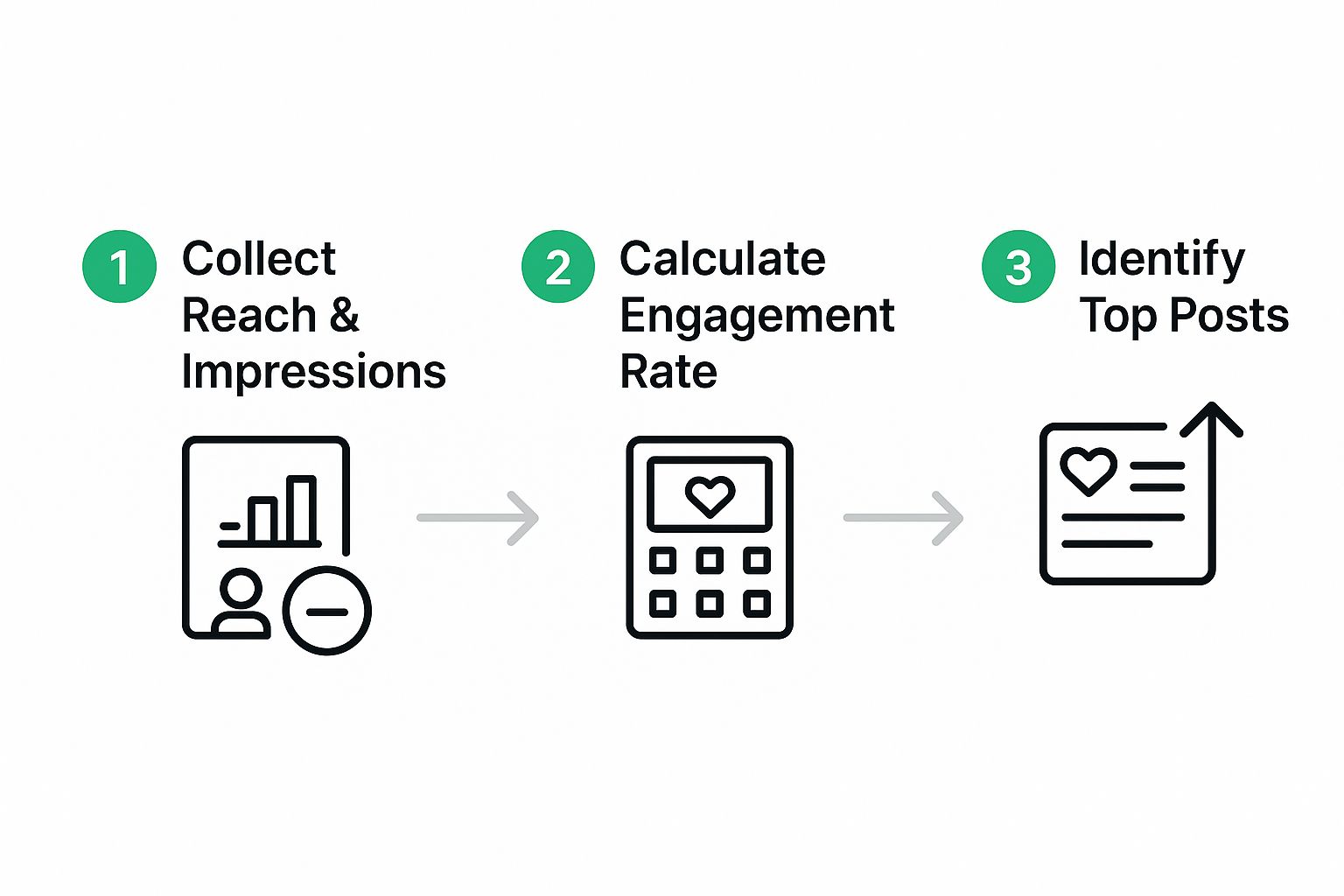
As you can see, it's a process of moving from basic numbers like reach to a genuine understanding of what content actually hits home with your audience.
The Power of Qualitative Data
Numbers tell you what your audience is doing, but they rarely tell you why. That’s where qualitative data comes in. This is all about getting to the thoughts, feelings, and motivations that drive the clicks and likes.
Getting this kind of feedback doesn't have to be complicated. Here are a few simple but powerful ways to get it directly from your followers:
Run Polls and Q&As: Instagram Stories and LinkedIn polls are perfect for asking direct questions. Ask for opinions on a new product idea, what content they want to see next, or what their biggest industry challenges are.
Mine the Comment Section: Your comment sections are basically a 24/7 focus group. Pay attention to recurring questions, common praises, and any points of confusion. It’s raw, unfiltered feedback, and it's invaluable.
Conduct Surveys: For deeper insights, a short survey can work wonders. Use a tool like Google Forms and share the link in your bio or stories. Offering a small incentive, like a discount code, can really boost your response rate.
When you blend this qualitative feedback with your hard data, you stop seeing numbers and start seeing the people behind them. And with 5.41 billion social media user identities out there, understanding these human nuances is what will make your content stand out and truly connect.
Turning Raw Data Into Actionable Insights
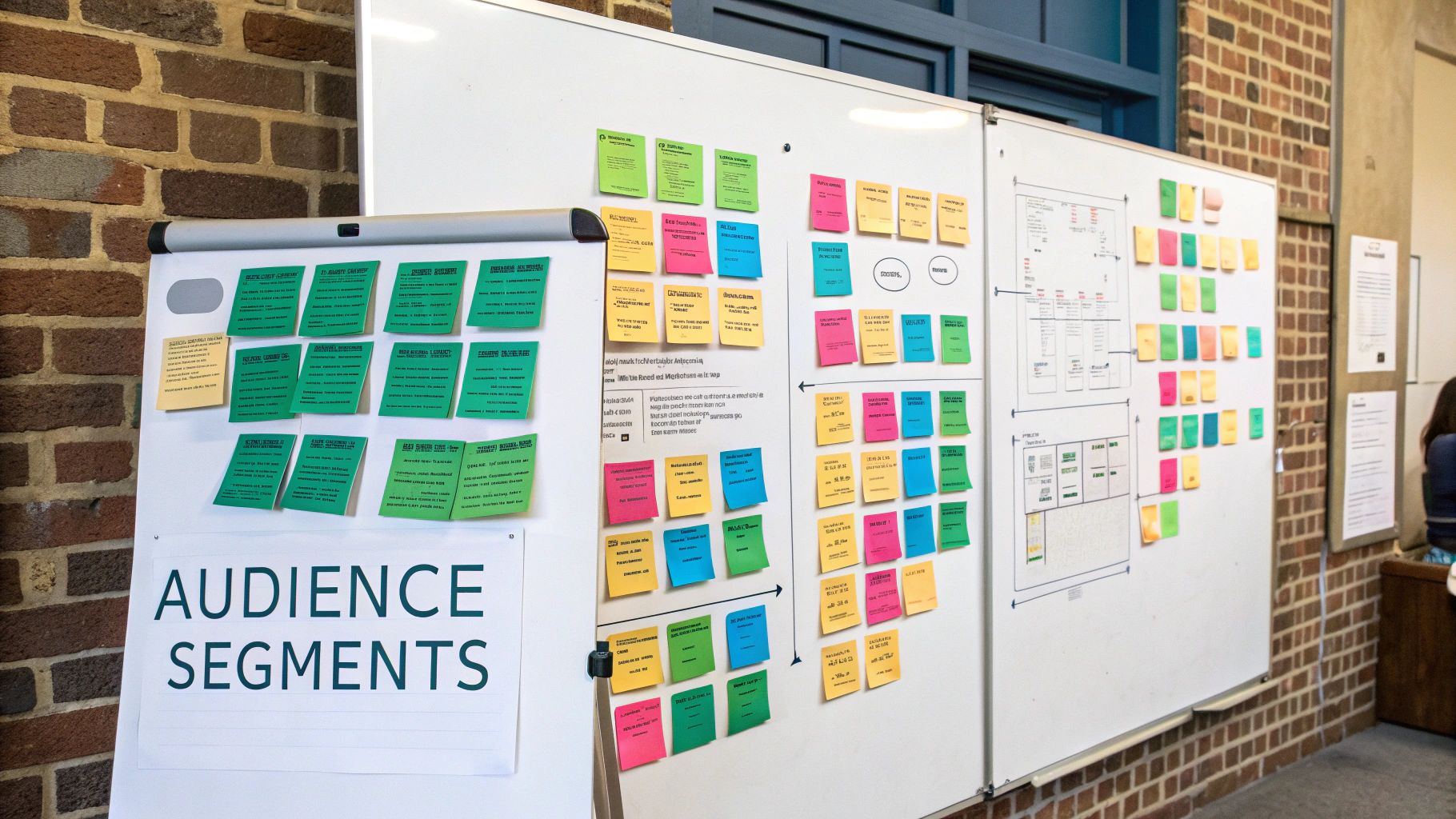
Collecting data is just the beginning. The real magic happens when you figure out what to do with it—that’s what separates the brands that struggle from the ones that thrive. This is the part where you stop looking at numbers, percentages, and charts and start building a real strategy.
Think of it this way: a social media audience analysis isn’t just about observing what happened. It’s about learning how to direct what happens next.
Let’s say you run the social media for a direct-to-consumer fashion brand. Your analytics show a steady stream of likes and follows, which is great. But to actually grow, you have to dig into the story behind those metrics. It’s not enough to know a post did well; you need to understand why it hit home so you can do it again. And again.
From Numbers to Narratives
One of the biggest traps people fall into is "data paralysis"—you're swimming in information but have no idea which way to go. The trick is to start asking better questions.
Instead of just noting your engagement rate, ask, "Which types of posts are actually getting people to talk in the comments?"
This small shift changes everything. You might spot a pattern you never would have otherwise. For example, maybe you find that your audience engages 50% more with candid, behind-the-scenes videos than with those perfect, polished product shots. That’s not just a random stat. It's a direct command from your audience telling you what they want.
For a deeper dive, it helps to see how other brands have done this successfully. I recommend checking out these actionable insights examples to see how raw data translates into real-world growth.
Building Detailed Audience Personas
All this analysis should lead to one thing: creating detailed audience personas. These aren't just bland demographic summaries. They’re living, breathing profiles of your ideal followers.
Going back to our fashion brand, your data might point to two very different customer types:
The Trendsetter (Ages 18-25): She lives on Instagram and TikTok. She loves Reels showing off new arrivals, adores influencer collaborations, and is all about user-generated content. You'll find her scrolling in the evenings and on weekends.
The Conscious Shopper (Ages 28-35): She's more of an Instagram and Facebook user. She's the one who carefully reads carousel posts about where you source your fabric, your brand's ethics, and how long your clothes will last. Her prime time is during her weekday lunch break.
> An actionable insight isn't just a fact—it's a fact with a recommended action. It connects a specific data point to a strategic decision that can improve your performance.
Boom. You now have a blueprint for your content. You know to post Reels on weekend evenings to catch The Trendsetter's eye and to schedule those in-depth carousels for weekday afternoons to reach The Conscious Shopper. It’s so much more effective than just throwing content at the wall and hoping something sticks.
Identifying Platform-Specific Behaviors
Don't forget to look at how people act differently on each platform. Your data might show that while Instagram is where people discover your products, your Facebook audience is all about community. They’re the ones who will actually answer your questions and join group discussions.
Even on a single platform, there are nuances. Take Facebook. In 2025, it’s still a monster with over 3.065 billion monthly active users, and the 25-34 age group is its bread and butter. Knowing this helps you ground your strategy in reality, understanding the core audience you're speaking to.
At the end of the day, turning data into insights is about finding the human story hidden in the numbers. It’s about listening to what your audience is telling you with their clicks and comments, and then using that knowledge to build a brand they truly connect with.
So, What Do You Do With All This Information?
Alright, this is where the rubber meets the road. All that time spent digging through data and sketching out personas pays off right here. It's time to take what you've learned about your audience and turn it into smarter content, better timing, and a strategy that actually works.
Let's start with your brand's voice. If your analysis just screamed "Gen Z," that formal, corporate-speak you've been using is going to land with a thud. You'll want to pivot to something more casual and witty, maybe even weaving in slang or meme formats that feel natural to how they talk online.
On the other hand, if you found out your biggest followers are seasoned professionals hanging out on LinkedIn, your tone needs to be sharp, insightful, and authoritative. The whole point is to sound like you belong in their world, not like an outsider trying to sell them something.
Fine-Tune Your Content Schedule
One of the quickest wins you'll get from this whole process is figuring out when to post. Forget those generic "best times to post" articles. Your analytics give you the real deal, showing you the exact times your people are scrolling, liking, and commenting.
For instance, maybe your "Conscious Shopper" persona is most active during their lunch break on weekdays. That makes 12 PM to 2 PM your golden window for those detailed, informative carousels. But what about your "Trendsetter" persona? They might be deep-diving into TikTok and Instagram after 8 PM on a Friday, which is the perfect slot for a high-energy, fun Reel.
> Don't just post when it's convenient for you. Post when it’s prime time for them. This is a simple tweak, but syncing your schedule with their habits can be a massive game-changer for your content's initial reach and engagement.
Build Ad Campaigns That Actually Convert
Organic reach is great, but when it's time to put money behind your content, this is where knowing your audience really shines. With solid personas in hand, you can stop spraying and praying with your ad budget. Instead, you can build laser-focused campaigns on platforms like Facebook and Instagram that speak directly to the people you want to reach.
Here's how that might look:
For your "Trendsetter" persona: You'd build an ad set targeting users aged 18-25 who already follow specific fashion influencers and are interested in user-generated content trends.
For your "Conscious Shopper" persona: You could target users aged 28-35 who have shown interest in sustainable fashion and ethical brands, then hit them with ad copy that highlights your company's values.
This kind of precision means you're not wasting money on people who will never be interested. Every dollar goes toward reaching users who are already halfway there, dramatically improving your conversion rates.
This data-first approach is becoming less of a nice-to-have and more of a necessity. Think about it: while a staggering 97.3% of connected adults are on a social network at least monthly, the massive user growth we saw in the early days is leveling off. To stand out now, you have to be smarter and more targeted than ever. If you're interested in diving deeper into this trend, you can read the full report on the state of social media.
Common Questions About Audience Analysis
Even with the best plan in hand, a few questions always seem to surface when you get into the weeds of a social media audience analysis. Let's walk through some of the most common hurdles I see people face so you can keep your strategy on track.
Do I Need Expensive Tools to Do This?
This is probably the number one question, especially for solo creators or small businesses. The good news? Absolutely not.
You can get a shocking amount of valuable information from the free, native analytics tools right inside platforms like Instagram and Facebook. These dashboards are more than enough to give you a solid understanding of your audience demographics and which content is actually hitting the mark.
My advice is always to start there. Master the tools you already have. You only need to think about paid software when you're ready to dive deep into competitor analysis or need a single dashboard to manage a whole bunch of different platforms.
How Often Should I Be Analyzing My Audience?
Things change fast online, so an audience analysis can't be a one-and-done project. But you also don't need to be pulling a full report every single week—that's just overkill.
For a comprehensive, deep-dive analysis, aim for once a quarter. This cadence is the sweet spot; it's frequent enough to catch important shifts in audience behavior without you getting lost in the data.
Between those deep dives, I recommend scheduling a lighter monthly check-in. Use this time to quickly review your key metrics and make sure your content is still aligned with what your audience wants.
> Think of your audience analysis as a living document, not a static report you file away. It should evolve right alongside your community, keeping your strategy fresh and effective.
What If My Data from Different Platforms Contradicts Itself?
It's actually pretty common to see conflicting data. You might find that your Instagram audience devours your short-form video content, while your Facebook followers are way more engaged with longer, more detailed text posts.
Don't panic—this isn't a problem, it's a powerful insight. It’s a clear signal that a one-size-fits-all content strategy won't work for you.
Treat each platform as its own unique community. Honor their preferences by giving them the content format they've shown you they love. Tailoring your approach this way is how you build a strong, engaged following on every channel.
Ready to stop guessing and start growing? Gainsty uses advanced AI and expert insights to connect you with authentic, engaged followers on Instagram. See how our organic growth strategies can build your community. Learn more and get started with Gainsty today.
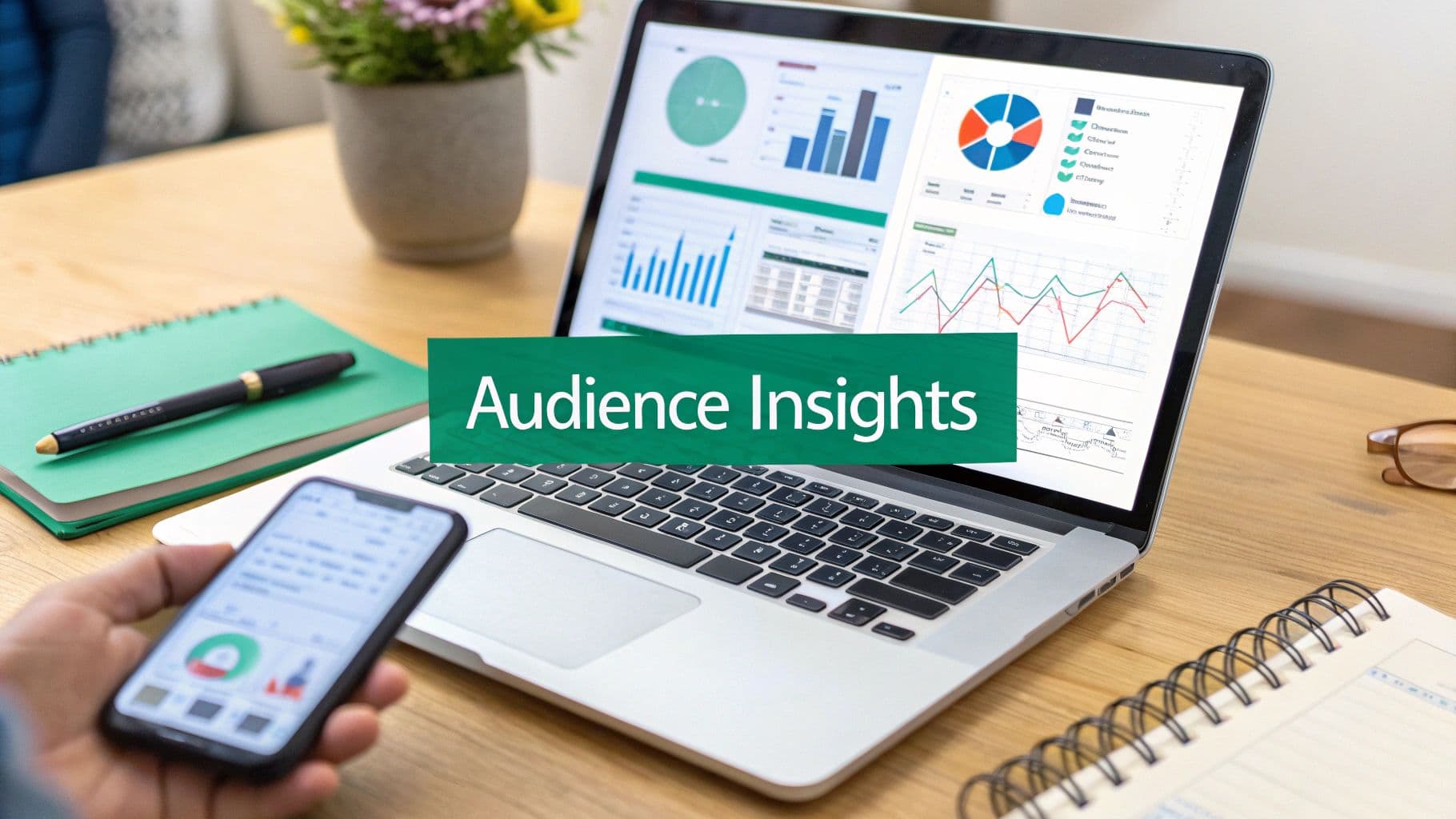
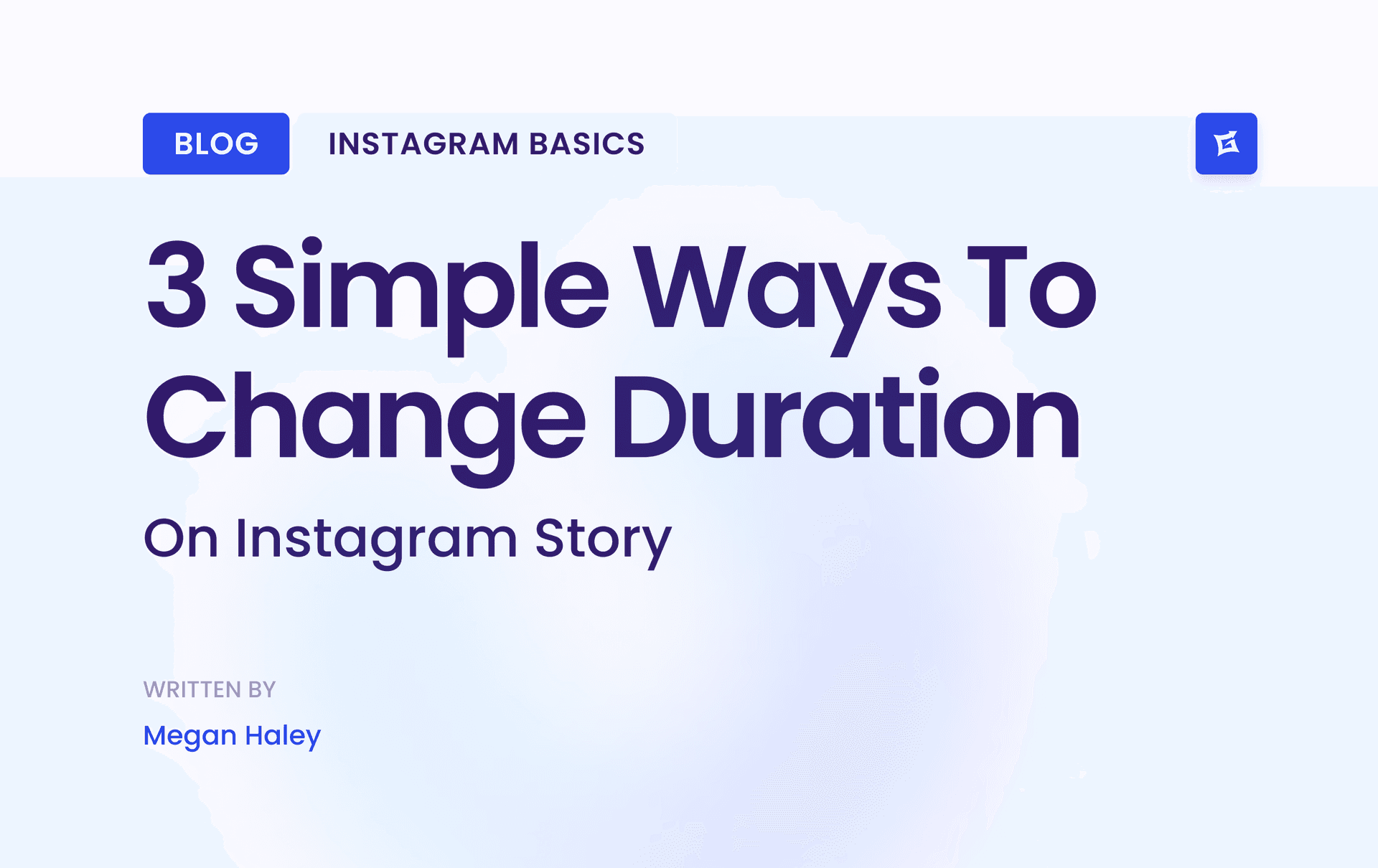
.png&w=1920&q=75&dpl=dpl_9XSWKBjhcBN6v6b1SN7m3p1WWjfr)
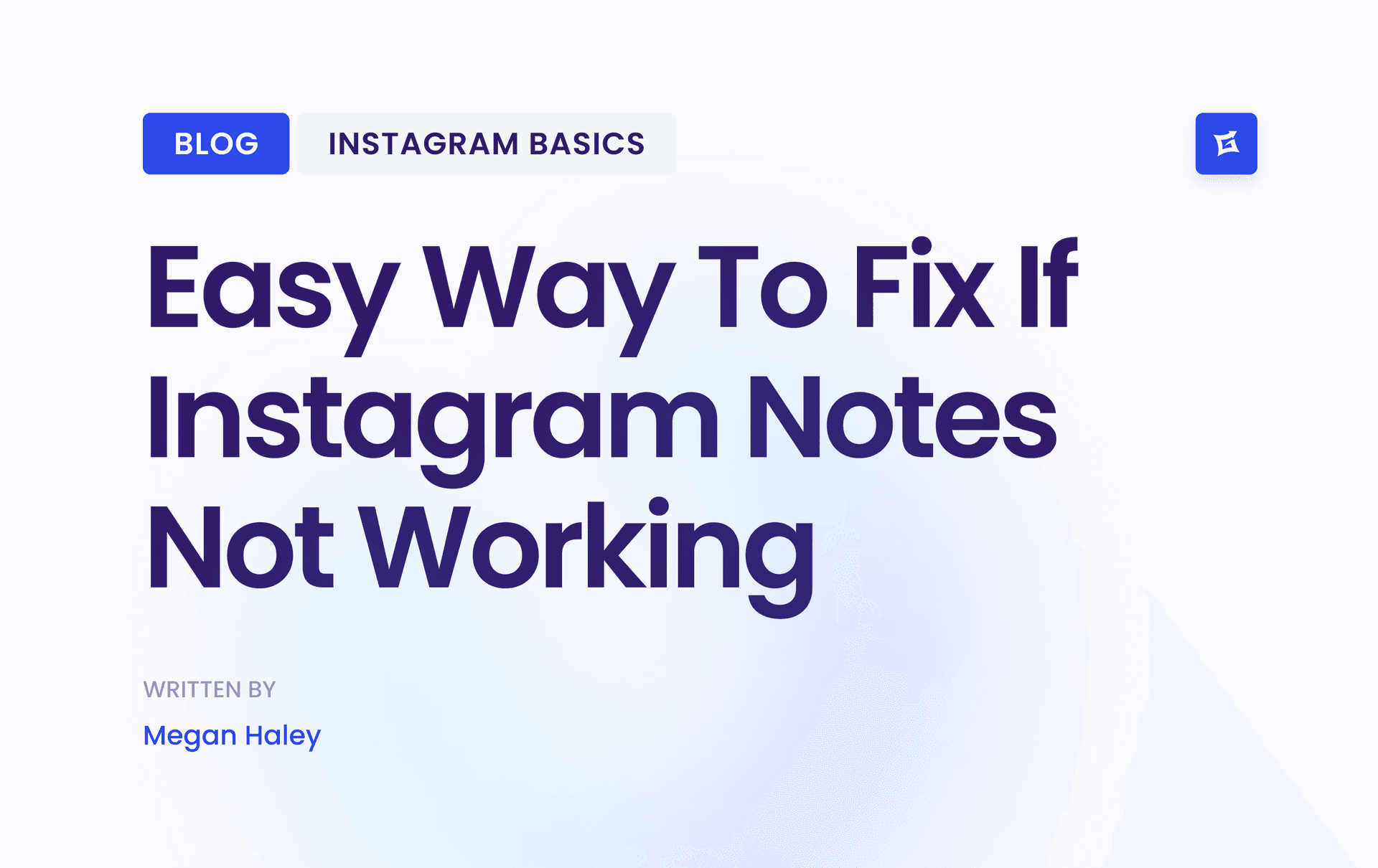
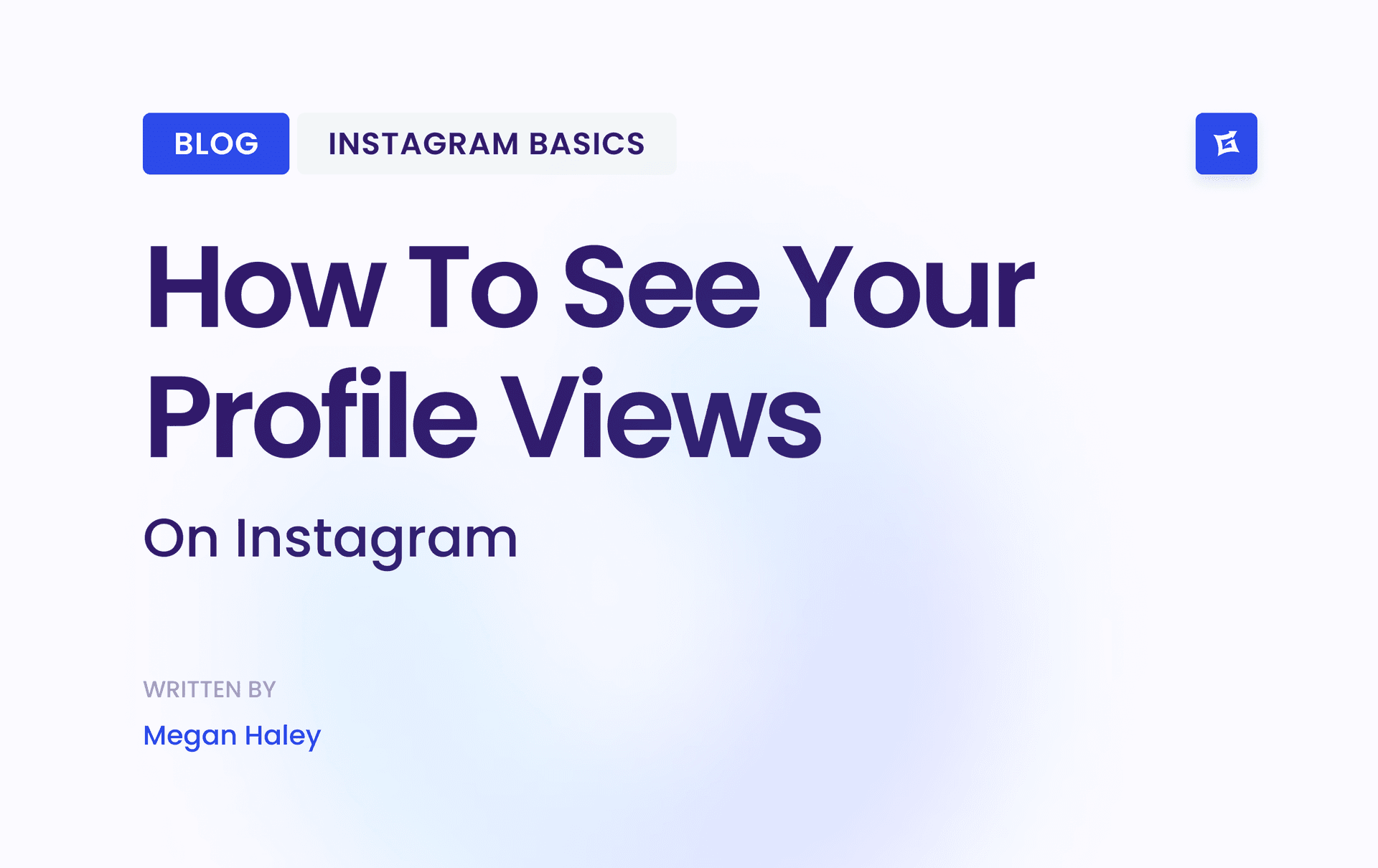
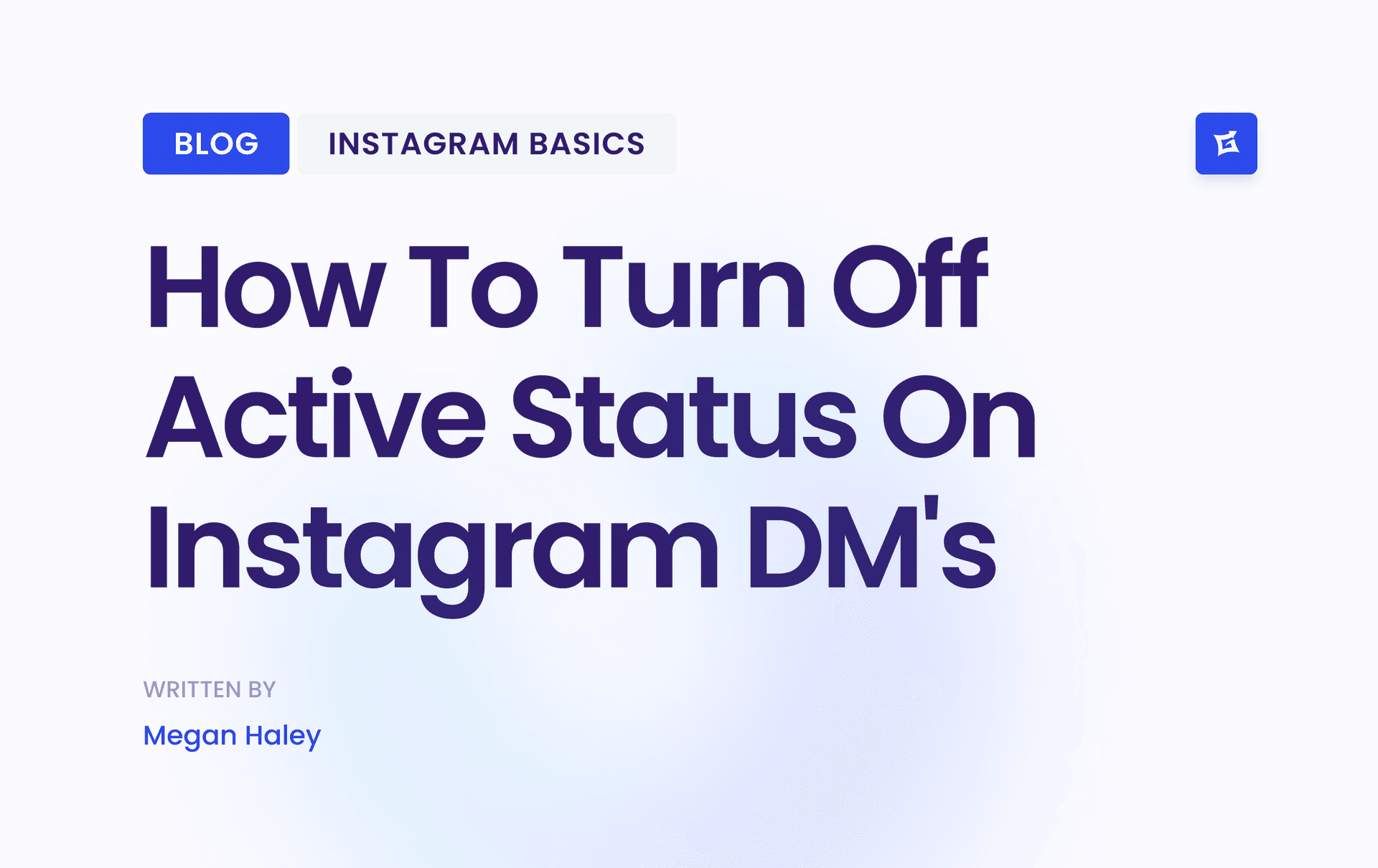
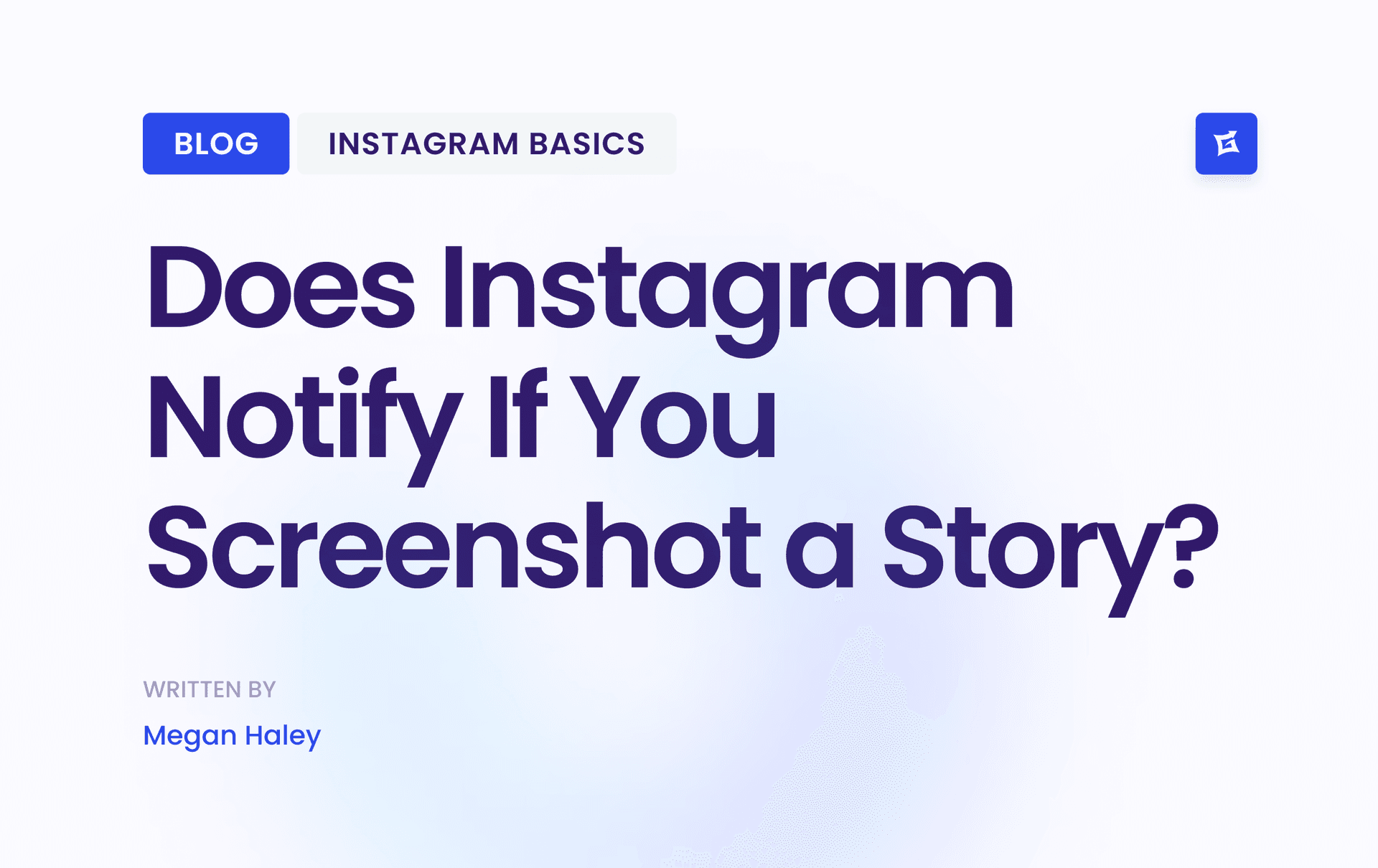



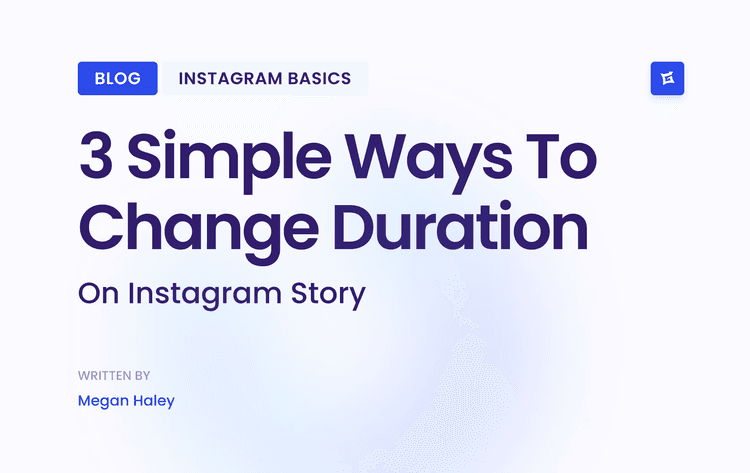
.png&w=750&q=75&dpl=dpl_9XSWKBjhcBN6v6b1SN7m3p1WWjfr)
